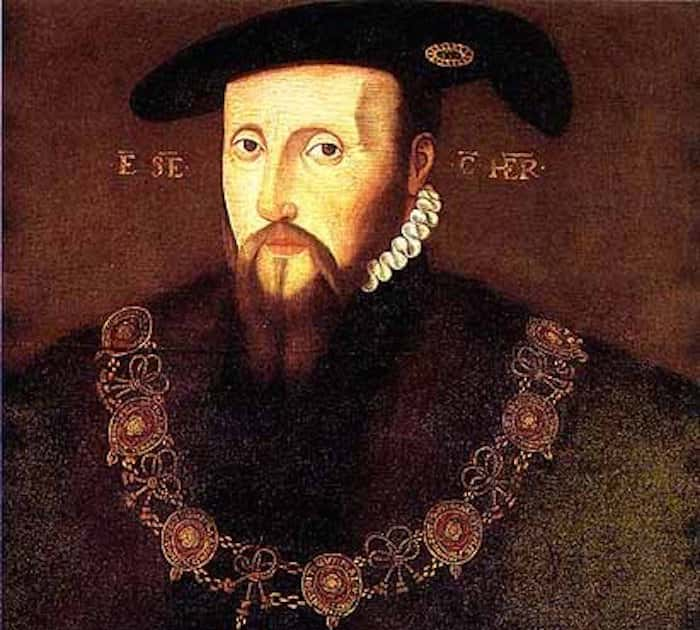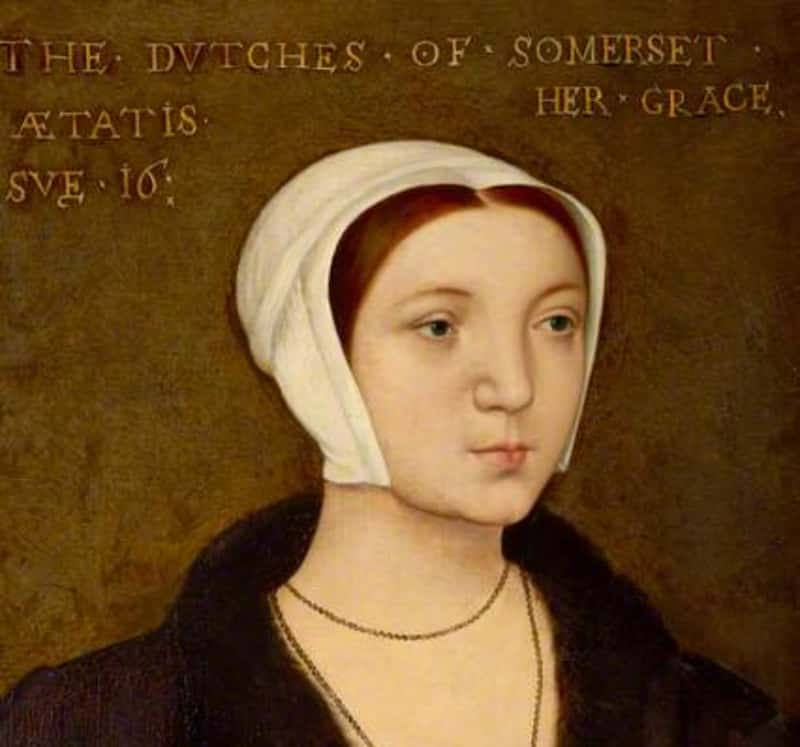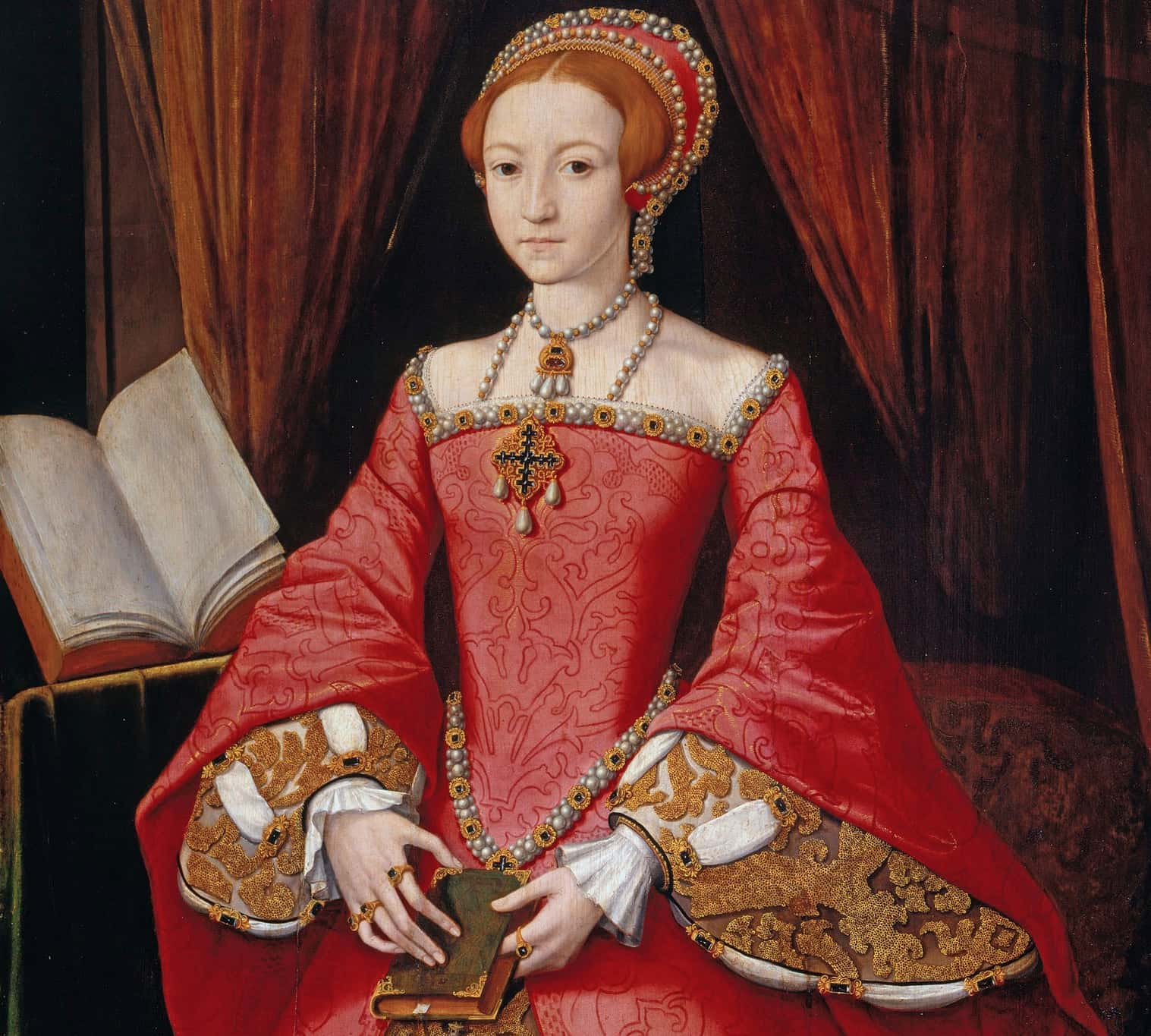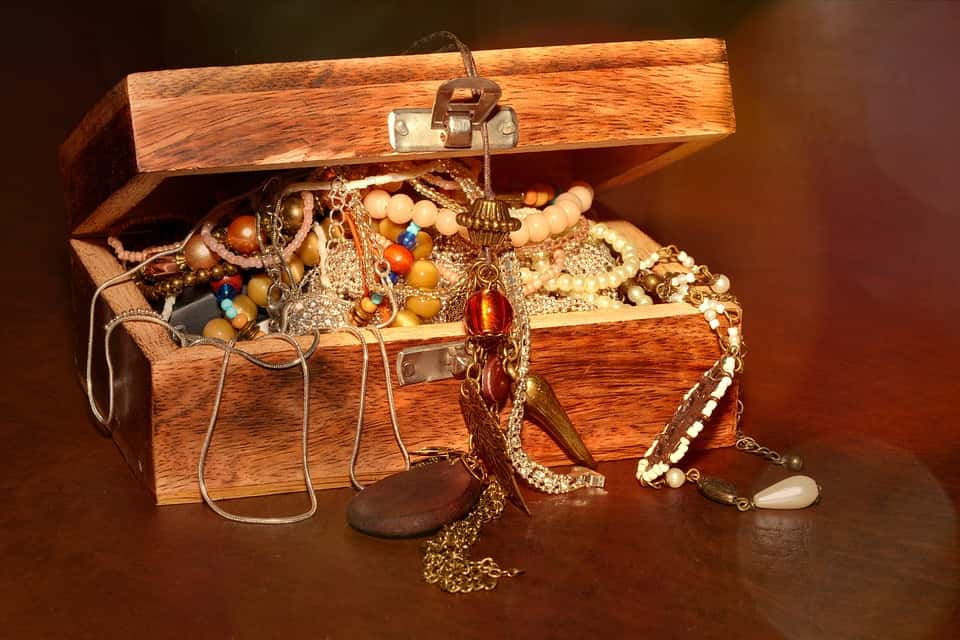Thomas Seymour was an older brother of Queen Jane Seymour and therefore the brother-in-law to Henry VIII of England. A favorite at the Tudor court, he was remembered for being handsome, swaggering, and charming, but ultimately shallow and too ambitious for his own good. Thomas began life as a simple knight’s son and rose to the king’s inner circle, but ended his career on the chopping block after a botched power grab, which involved kidnapping and an animal’s death. Just how did he get there? Read on to learn about the ill-fated plots of Thomas Seymour, the notorious brother-in-law of Henry VIII.
Thomas Seymour Facts
42. A 16th Century Bro
In his prime, Thomas Seymour was a charmer, especially with women. A contemporary described Seymour as "hardy, wise and liberal...but somewhat empty of matter." This kind of description would repeat itself in many historical accounts: Thomas was pretty, witty, fun, but too shallow for his own good.
41. Little Siblings Are Good for Something
Thomas owes his career to his younger sister, Jane Seymour. As a lady-in-waiting to Queen Anne Boleyn, Jane had managed to catch the eye of Henry VIII by 1536. The king and Jane married just 11 days after Anne Boleyn’s execution, thereby inducting Thomas into the royal inner circle.
40. Where Did You Come From?
Almost nothing survives about Thomas Seymour’s early life and education. In fact, he only enters historical record in the early 1530s, when he served as a messenger to his cousin, Francis Bryan, the English Ambassador to France.
 Getty Images
Getty Images
39. Thanks for the Boost, Sis
Jane Seymour did what none of Henry VIII’s wives could do: she gave him a healthy male heir, Prince Edward. Unfortunately, Jane died of complications from childbirth in October 1537. Fortunately, her brothers Edward and Thomas lived to enjoy the spoils of her labor. Both Seymours were competent enough as courtiers to hold positions at court as the king’s brothers-in-law, and the future king’s uncles.
38. Cheaper by the Dozen
Thomas Seymour came from a large and fairly impressive English gentry stock. Born in around 1508 at Wulfhall in Wiltshire, England. His parents were Sir John Seymour and Margery Wentworth. Margery was a renowned English beauty whose looks inspired some of the poetry of John Skelton; John Seymour was an accomplished knight and sheriff. They had 10 kids, of which Thomas was the fourth-born.
37. You’re Not the Father
Did Thomas inherit his father’s penchant for marital scandal? In 1540, Thomas’s oldest surviving brother Edward disinherited his two sons by his first marriage to Catherine Fillol. It was whispered that Edward questioned their paternity. Rumors endure that Fillol had been impregnated by her own father-in-law, Sir John Seymour. In recent years, this theory has fallen into disrepute; notes of an affair are only implied in a marginal note from a text published some 200 years after it happened…
36. Give It Time
In 1542, Thomas became acquainted with his future wife, Catherine Parr. Of course, at this time, Catherine’s much older second husband, John Neville, was still alive. That would not be the case for much longer: her husband died in 1543, leaving Catherine a wealthy widow and free to pursue a “romantic friendship” with Thomas.
35. Mind If I Step in?
Thomas Seymour and Catherine Parr were in the midst of marriage talks when Henry VIII began to take in interest in Catherine for himself. While Seymour was closer to her age, Catherine viewed it as her duty to accept the King’s proposal. Seymour would have to wait.
34. No Third Wheels Allowed
Shortly before Henry VIII married Catherine Parr, he sent Thomas on an extended court mission to Brussels as the English Ambassador to the Netherlands. Many interpret this as an awkward attempt to distance Seymour from Parr, while still keeping him in the court, due to his familial relationship to the Prince.

History's most fascinating stories and darkest secrets, delivered to your inbox daily.
33. TFW Henry VIII Keeps Blocking Your Love Life
Besides Catherine Parr, Seymour had other brides vying for his hand. The most notable was Mary Howard, Duchess of Richmond, the king’s widowed daughter-in-law. However, her brother Henry Howard deeply protested the match. He preferred that Mary should become a mistress (and perhaps Queen #7) to the king himself. Unfortunately, no one asked what Mary thought about any of these guys.
32. Who Needs Girls When You Have Swords?
While Henry VIII won the battle for Catherine Parr’s hand in marriage, Seymour won a few battles himself in the meantime. Between 1543 and the king’s death in 1547, Seymour developed a seasoned military career: he served as a marshal of the English Army during the Italian War of 1542–46, and he also was promoted to Master-General of the Ordnance in 1544.
31. Beware Big Brother
Upon the death of Henry VIII, both Edward and Thomas Seymour enjoyed positions on the 9-year-old King Edward’s Regency Council. They also enjoyed new titles to befit their status, but of course the older Edward got the lion’s share: Edward was made a Duke of Somerset while Thomas was “just” the new Baron of Sudeley. While Thomas was appointed to Lord High Admiral—which gave him sweeping powers over the navy—big brother Edward got the Big Cheese position as Lord Protector, head of the council, and therefore de facto ruler of England. Naturally, old sibling rivalries were resurfaced.
30. No Time Like the Present
Almost indecently soon after Henry VIII’s death, Catherine Parr rekindled her relationship with Thomas Seymour. They married in either April or Mary 1547—about six months after Henry died.
29. Nothing Wrong With Third Place
Despite their romantic history, Catherine Parr was not Thomas Seymour’s first bridal choice upon King Henry’s death. Thomas had offered marriage to both of King Henry’s daughters in hopes of gaining status over his Lord Protector brother. Understandably, both Mary and Elizabeth Tudor rejected his indecent proposal.
28. Won’t Take No For An Answer
In February 1547, a 13-year-old Elizabeth rejected Thomas Seymour’s marriage proposal in an eloquent letter. The future queen said it was nothing personal, but that she was too young—Seymour was about 25 years her senior—and she would be taking a two-year break from men to mourn her father. Seymour responded to her classy move with his own: he married Elizabeth’s rich stepmother and moved in with them both.
27. Not A Shoulder to Cry On
Thomas and Catherine’s quick marriage was a huge scandal. To save face, Thomas reached out to the young king’s sister, Lady Mary Tudor, to speak to the king on their behalf. And yes, this is the same Mary that he proposed to before he “settled” for her own stepmom. Understandably angered as his gall, Mary refused to help and advised her younger sister Elizabeth to leave Catherine Parr’s household.
26. A Gem of a Drama
By marrying Catherine Parr, Thomas also made an enemy of his brother Edward’s wife, Anne Stanhope. And he messed with her wardrobe: traditionally, the royal jewels were worn by the ruler of England’s wife. King Henry’s will had stipulated that Catherine keep her jewels.
Edward went “yeah, nope” and gave them to his wife, Anne Stanhope—who, as the wife of the Lord Protector, was technically the ruler’s wife. Naturally, Thomas made this about him and saw it as a swipe from big brother Edward made through the women.
25. Edward in the Middle
Thomas didn’t just use women to undermine his brother; he set about making himself the “Fun Uncle” to King Edward VI. Thomas told the 9-year-old that the Lord Protector was making a “beggarly king” of him and would sneak the boy pocket money to make him feel more grown-up. King Edward got accustomed to his Uncle Thomas’s hand-out, such that he openly asked him for his allowance and said it might be better if the less fun Uncle Edward just died.
24. Permission Slip Drama
Thomas’s favor with little King Edward VI had its limits. At one point, Thomas asked the boy to sign a document that would make Thomas the official Governor of the King’s Body. Edward was not willing to go behind his other uncle’s back to such a degree just yet—much to the frustration of Thomas.
23. Danger Ahead
Upon days of moving in with Catherine Parr, Thomas turned his attention toward the teenaged Elizabeth Tudor. Her governess, Kat Ashley, confessed how Thomas would show up to the girl’s room in the morning to “make as though he would come at her” as Elizabeth shrank away. To avoid him, Elizabeth began to wake up earlier in the morning, but he would just come back even earlier still, and sometimes “barelegged in his slippers”—which essentially means only wearing a short nightgown.
22. Three Is Not Very Company
As if to prove there was no harm in Seymour’s attentions to Elizabeth, Catherine Parr began to join Seymour on his “romps.” At one point, Catherine held even Elizabeth down as Seymour tickled her.
21. Cut It Out
Most infamously, Thomas Seymour once cut Elizabeth’s mourning dress into pieces in the middle of their garden. If that weren’t disturbing enough, her stepmother Catherine Parr was right there, apparently “holding” her down as part of the continued ruse that Seymour was only kidding.
20. Keep an Eye Out for Whom?
After the notorious dress-cutting episode, Catherine Parr became more suspicious of her husband’s intentions. She told Elizabeth’s governess to be mindful of her charge, claiming that Seymour had spotted Elizabeth with “her arms about a man’s neck.”
However, no one else had been able to corroborate Elizabeth being close to any other man at this time. This led the governess—and historians—to believe Catherine made it up to get another set of eyes on her stepdaughter and husband.
19. Touch Me Not
A haunting scribble by 14-year-old Elizabeth gives us insight into her feelings towards Thomas Seymour. In 1548, she wrote “Thou, touch me not” in Latin, before deleting the message and writing “Let him not touch, me.” She wrote this on the outside of an envelope addressed from Catherine Parr to Seymour; the queen had asked Elizabeth to pass on the letter to him. While writers have used Seymour’s charm with the ladies to proffer arguments about Elizabeth’s potential invitation of his advances, this indirect plea to stop appears to suggest otherwise.
18. Domestic Disharmony
On June 11, 1548, Catherine Parr caught Thomas Seymour and Elizabeth Tudor in an “embrace.” The next day, Elizabeth was promptly sent away from the household. She would see neither Catherine or Thomas again.
17. Going Out With a Bang
On August 20, 1548, Thomas’s wife Catherine gave birth to their only child, Mary Seymour. Unfortunately, she died of postnatal complications soon after. It’s said the fevered queen spent her last days in a delirious and antagonistic mood towards her unfaithful husband. Can we blame her?
16. No Legacy
What happened to the only child of Thomas Seymour? After her father’s disgrace and execution, the six-month-old Mary Seymour was left orphaned and impoverished; the Crown revoked her father’s lands. Although some wealth was restored to pay for her care, the child likely didn’t live to enjoy any of it.
All record of Mary Seymour disappears after her second birthday. Some hopeful folks have suggested that she married and lived her life in peaceful obscurity—even getting adopted by a noble family—but it’s more probable that Mary was one of the many Tudor-age babies to die in infancy.
15. Queens in Waiting
Elizabeth was not the only future queen in Thomas Seymour’s household. The future “Nine Days Queen” Jane Grey was also a ward in his home under Catherine Parr’s care. It’s said Jane was sent there for Seymour to promote her as a bride to King Edward VI.
14. Never Stop Plotting
Even after Queen Catherine’s death, an 11-year-old Lady Jane Grey remained in Thomas Seymour’s household. Her parents soon became impatient about Seymour’s promises to wed her to the king and began fighting to get her back. Like Elizabeth, Jane was also in the line of succession; did they fear that Seymour would just marry Jane for himself?
13. No Baby
Following her removal from Catherine Parr’s house, Elizabeth Tudor suffered a summer of migraines, jaundice, digestive issues, and irregular periods. Years later, this illness led to an urban legend that Elizabeth had become pregnant by Thomas Seymour. However, there’s nothing to substantiate this rumor. Besides, the year’s events left lots for Elizabeth to be sick about.
12. Is There Any Child Safe From This Dude?
The widowed Thomas Seymour spared little time in making a move on Elizabeth again. As she settled into her new household at Hatfield, Seymour sent a nephew over to check on her.
Passing along a message from Seymour, he took aside Elizabeth’s governess and politely asked: “whether [Elizabeth’s] great buttocks grown any less or no?”
11. The Widow and The Windfall
Upon her death, Queen Catherine Parr’s left all of her property to Thomas Seymour. The simple baron was suddenly one of the richest and most eligible men in the country.
10. What Will Be Will Creepily Be
Seymour’s interest in Elizabeth’s marriage soon became more than just rumors. It got to the point where Elizabeth’s household accountant asked if she would seriously consider him as a husband. She ambiguously implied, “When that comes to pass, I will do as God shall put in my mind.” When interrogated, the accountant said he was not convinced that Elizabeth reciprocated Seymour’s advances at all.
9. Will You Buccaneer With Me?
In defiance of his naval duty, Thomas Seymour aligned himself with pirates. Towards the end of 1547, he was openly challenging his brother’s authority over the Regency Council. As Lord High Admiral, it was his job to suppress pirates, but he instead turned to them for support in case of a rebellion.
8. Lord of Leaving Them on Read
To his credit, Edward Seymour tried to give his brother a chance to explain himself. It was very apparent that Thomas was planning something bad by 1548. A council meeting was called so Thomas could testify on his own behalf, but the little brother flaked and never showed up.
7. Welp!
Thomas Seymour’s downfall began to pick up speed with an attempted kidnapping and a doggy murder. On January 16, 1549, he tried to break into the 11-year-old king’s room in an apparently botched kidnap attempt. Barking from the king’s dog had spoiled any chance of a quiet entry; Seymour shot the canine to death and retreated to his manor. Seymour was arrested the very next day and charged with treason.
6. I’m Not Going Down With Him
Elizabeth Tudor and her servants were detained and interrogated for potential connection to Thomas Seymour’s treason. The kidnap attempt on King Edward cast suspicion on all his associates; unfortunately, this included Elizabeth.
For two weeks, Elizabeth showed her political strength and managed to avoid incriminating herself or her servants. More unfortunately, the questioning revealed Seymour’s inappropriate conduct towards her to the public.
5. The Treason Prints Itself
In addition to 33 charges of treason, Thomas Seymour was also condemned for embezzlement. He has conspired with the Bristol Mint to fund his potential rebellion. What goes better with a little treason than some financial crime?
4. Law and Disorder
As with many high-profile Tudor treason cases, there wasn’t actually enough evidence to convict Thomas Seymour in a court of law. Thus, he was condemned by Act of Attainder, which allowed the crown to legislate death without a pesky trial. He was beheaded on March 20, 1549.
3. I’m Starting to Think They Don’t Care About History
In 1953, a romantic genre movie was made about the “affair” between Thomas Seymour and Princess Elizabeth. The film, Young Bess, stars Stewart Granger as Seymour while the “teen” Elizabeth is played by a 24-year-old Jean Simmons.
2. Speak Ill of the Dead
When informed of Seymour’s death, Elizabeth Tudor is said to have quipped, “This day died a man of much wit and very little judgment.” After all that, were they really expecting a sweeping epitaph?
1. There’s Symmetry in Being Siblings
Just three years after Thomas Seymour’s execution, his hated older brother Edward also fell from grace. He feared a coup, and like Thomas, Edward sought the king’s physical person to protect him, kidnapping him to Windsor Castle. Like Thomas, it didn’t work. Edward was beheaded in January 1552.




















































